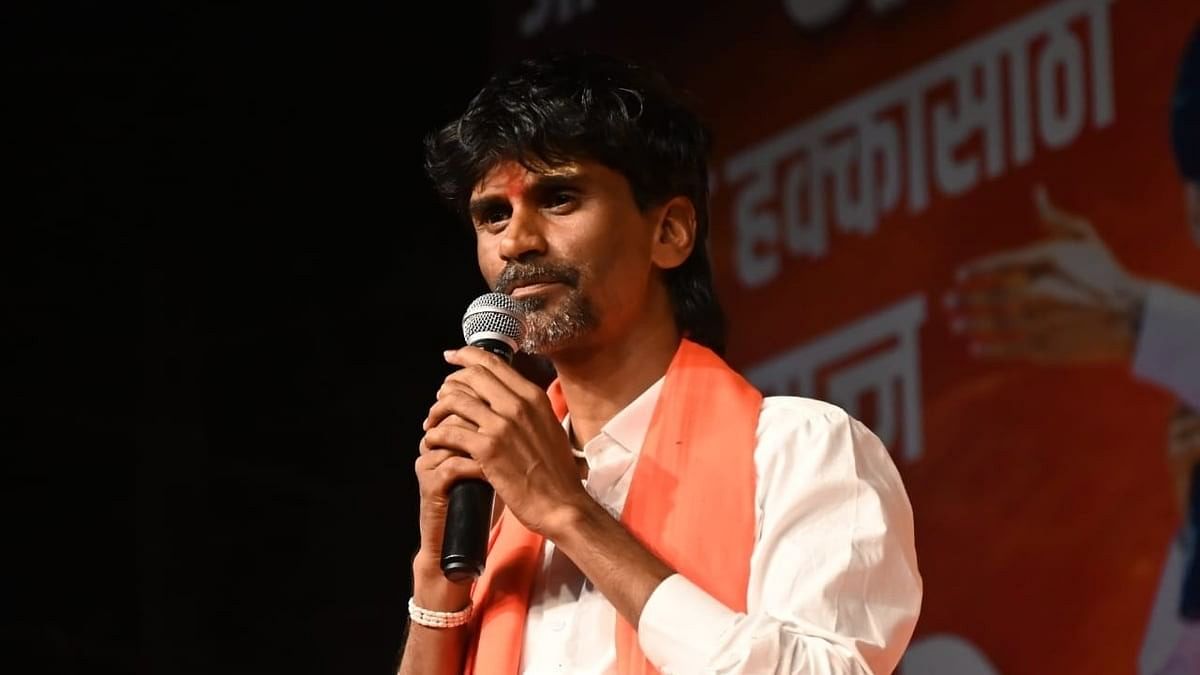
Maratha activist Manoj Jarange Patil.
Credit: DH Photo
Mumbai: Maharashtra’s Scheduled Tribe (ST) reserved seats will witness a fierce competition in the ensuing Vidhan Sabha polls in the wake of the change in political dynamics and the surprises in the recently-concluded Lok Sabha polls.
Of the 48 Lok Sabha seats, four are reserved for STs, while in the 288-member Maharashtra Legislative Assembly, 25 seats are reserved for STs.
The demand for inclusion of Dhangars in the list of STs is going to be a major issue besides the effective implementation of the Scheduled Tribes And Other Traditional Forest Dwellers (Recognition Of Forest Rights) Act, 2006 popularly referred to as the Forest Rights Act.
Tribals account for nearly 10 per cent of the state’s 13 crore population.
The four ST reserved seats of Lok Sabha are - Nandurbar, Dindori, Palghar and Gadchiroli-Chimur.
If one looks at the 2019 the saffron alliance won all the four Lok Sabha seats - Nandurbar (Heena Gavit - BJP), Gadchiroli-Chimur (Ashok Nete - BJP), Dindori (Dr Bharti Pawar - BJP) and Palghar (Rajendra Gavit - Shiv Sena).
However, there has been a reversal in 2024 with BJP managing just one seat of Palghar (Dr Hemant Savara) while yet Maha Vikas Aghadi bagged three of them - Nandurbar (Gowaal Padwi - Congress), Gadchiroli-Chimur (Dr Namdeo Kirsan), Dindori (Bhaskar Bagare - NCP-SP).
If one looks at the 2019 Assembly polls, BJP bagged the lion's share of 8 seats while undivided Shiv Sena 3. The then Democratic Front won 10 seats with NCP 6 and Congress 4. Besides, 4 were elected as Independents.
One of the big issues is the demand by Dhangars for inclusion in ST quota - which is being opposed by the latter.The Dhangar community - traditional nomadic shepherds - who get 3.5 per cent reservation in education and jobs under NT (C) category demand that they be placed under STs, which has a 7 per cent quota.
The Dhangar community leaders claim ‘Dhangar’ and ‘Dhangad’ are same and a "typographical error” has deprived them in Maharashtra to get the ST benefits unlike other states.
The ST community is opposed to the idea as it will dilute their quota. The Dhangars account for 9-10 per cent of the state's population.
The ST-Adivasi community is opposing it. Deputy Speaker Narhari Zirwal is leading the opposition and he along with half a dozen ST MLAs, cutting across party lines, recently jumped to the safety net of Mantralaya to register their protest.
After the realignment of state politics, the battle between the BJP-led Maha Yuti and Congress-headed Maha Vikas Aghadi has become interesting.
Besides, Maratha reservation campaigner Manoj Jarange-Patil, who is expected to field candidates across the state, has decided not to do so in ST reserved seats and back the candidates who had supported the cause of Marathas.
Around 11 major tribes reside in the state with Gond, Bhind and Mahadev Koli forming the big population group. Other major tribes are Warli, Kokana, Thakur, Halba, Andh, Koli Malhar, Katkari, Kolam, Korku and Gamit.
If one looks at the districts - Palghar, Thane, Pune, Nandurbar, Dhule, Jalgaon, Nasik, Gondia, Gadchiroli, Yavatmal, Chandrapur, Ahmednagar have a big tribal population.
It may be recalled, nearly 30,000 to 35,000 farmers and adivasis marched from Nashik to Mumbai's Azad Maidan -a distance of nearly 180 kms in seven days ending 12 March, 2018. In fact, the protesters won the hearts in Mumbai as they chose to walk during the night and wee hours to avoid traffic mess and taking into account board exams. The images of blistered feet of farmers made national images.